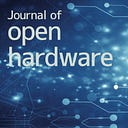The Open Hardware Community Responds to COVID-19 Shortages
This blog is part of a series on open hardware and key messages for public policy. Read the introduction and access other #OHpolicy blogs here.
By Michael Weinberg, Executive Director, Engelberg Center on Innovation Law & Policy at NYU Law and Board President, Open Source Hardware Association (OSHWA)
One of COVID’s early victims was the medical supply chain. As the crisis spread in the spring of 2020, public health authorities began to report shortages of everything from plastic face shields to ventilators. In response, seemingly overnight and from nowhere, a distributed network of open source designers, manufacturers, and distributors — for example, Make4Covid, GetUsPPE, Makers Unite!, and Open Source Medical Supplies — emerged to fill the void.
This open hardware community was not a formal organization. Instead, it was made up of individuals with skills that made up pieces of the puzzle — a textile designer, an electrical engineer, a 3D printer in a makerspace — assembling themselves into an open production network. Using open hardware principles, they designed new equipment (sometimes from scratch), found ways to manufacture that equipment locally with digital production tools or crafting assembly lines, and distributed that equipment to the places that needed it most.
This response is a powerful validation of open hardware design concepts. By developing in the open, and in openly licensing their work, these individuals and networks were able to quickly iterate on designs. Improvements discovered in one corner of the network were quickly adopted across the network, resulting in a rapid convergence on the most effective approaches.
The response allowed society to respond nimbly to the COVID crisis. Informal, distributed networks were able to quickly design the equipment that was needed. That equipment was free to be produced locally in order to address localized shortages. Individual communities could also easily modify the open equipment designs in order to match local medical or manufacturing conditions. Sometimes these local modifications were contributed back to the collective. Other times they were only relevant to one place at one time.
The openness at the heart of open source hardware is what made this fluid response possible. Creators who contributed to collective designs could be confident that their work would not be removed from their control by an entity assering some sort of intellectual property ownership over it. Designs could be modified without negotiating licenses, or even identifying the original creators. Equipment could be manufactured by anyone without reporting to — or obtaining permission from — a central authority.
Although the open hardware response to COVID was extraordinary, there is reason to believe that it could have been even more impactful with more formal support from public health authorities.
Most of the early open hardware development was guided by a combination of the ad hoc interests of response participants and information gleaned from public reports of need by medical responders. This meant that the alignment between the demands of medical responders and the open hardware community was imperfect, leading to inefficiencies on both sides. Public health authorities could have improved the efficiency of the response by playing a matchmaking and information distribution role, clearly communicating need to the open hardware community and capacity to the medical community.
Similarly, the informal networks of open hardware designers, manufacturers, and distributors were not well matched to the existing regulatory frameworks that control some types of medical equipment. While this regulation is important and exists for good reason, public health authorities could have worked with the open hardware community and regulators to develop clear guidelines for how the open hardware community could work within frameworks. These groups also could have worked collaboratively to build new regulations that were most appropriate for the emergency conditions at the time.
As a result, the open hardware response to COVID stands as a tantalizing example of the power of open hardware in a crisis and an opportunity to prepare even more effective responses in the future. While we hope that COVID is a once-in-a-lifetime crisis, many types of crises strain our supply chains. By taking steps to recognize and engage the power of the open hardware community, governments, public health authorities, and emergency responders can enhance their capacity for flexible, effective response to crises in the future.
These steps can take many forms, but they all rely on the decision to take the power of open hardware seriously. Building connections with open hardware networks and government supply chains in advance of the next crisis, forging paths for communication between regulators and non-traditional creators, and making publicly-funded hardware available to open hardware communities will help to supercharge the open hardware response to the next crisis. Failing to take these steps will make it that much harder for the open hardware community to make a full contribution to crisis responses in the future.
